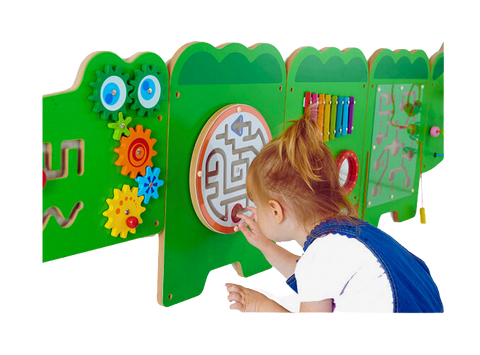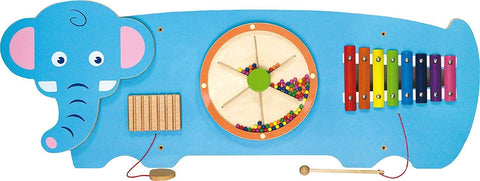Whether you're designing a sensory room, playroom, or catering to individuals with autism, ADHD, or additional needs, Sensory Wall Toys will unlock a realm of imagination, learning, and sensory stimulation. So, buckle up and let's dive into the enchanting world of sensory walls!
Sensory Wall Benefits:
- Sensory Stimulation
- Calming and Relaxing Effects
For children with autism, ADHD, or additional needs, a sensory wall can serve as a calming oasis. The gentle movements, soothing sounds, and tactile sensations offered by these toys and panels can help children find comfort, reduce anxiety, and regulate their emotions. It provides a safe space where they can retreat, relax, and regain focus.
- Motor Skills Development
- Cognitive and Problem-Solving Skills
As little adventurers explore the various features of sensory walls, they embark on a journey of discovery and problem-solving. Whether it's figuring out how to move a bead along a maze or solving puzzles, these activities engage their minds and foster critical thinking skills. Children learn cause-and-effect relationships, develop logical reasoning, and improve their spatial awareness.
- Language and Communication Enhancement
Sensory wall toys and panels can be excellent tools for language and communication development. As children play, they engage in imaginative play scenarios, storytelling, and pretend play, encouraging expressive and receptive language skills. Parents, therapists, and caregivers can join in, prompting discussions, asking questions, and expanding vocabulary, creating meaningful opportunities for language enrichment.
- Social Interaction and Cooperation
A sensory wall is not just a solo adventure; it can also be a platform for social interaction and cooperation. By incorporating collaborative elements like turn-taking games or cooperative puzzles, children learn to share, communicate, and work together. This fosters social skills, empathy, and cooperation, creating a positive environment for social development.
These magical additions to sensory rooms and playrooms provide endless opportunities for sensory stimulation, motor skills development, cognitive growth, language enhancement, and social interaction. So, dive into the realm of sensory exploration, ignite the imagination, and watch as children with autism, ADHD, and additional needs thrive in this captivating world of sensory wonder!



